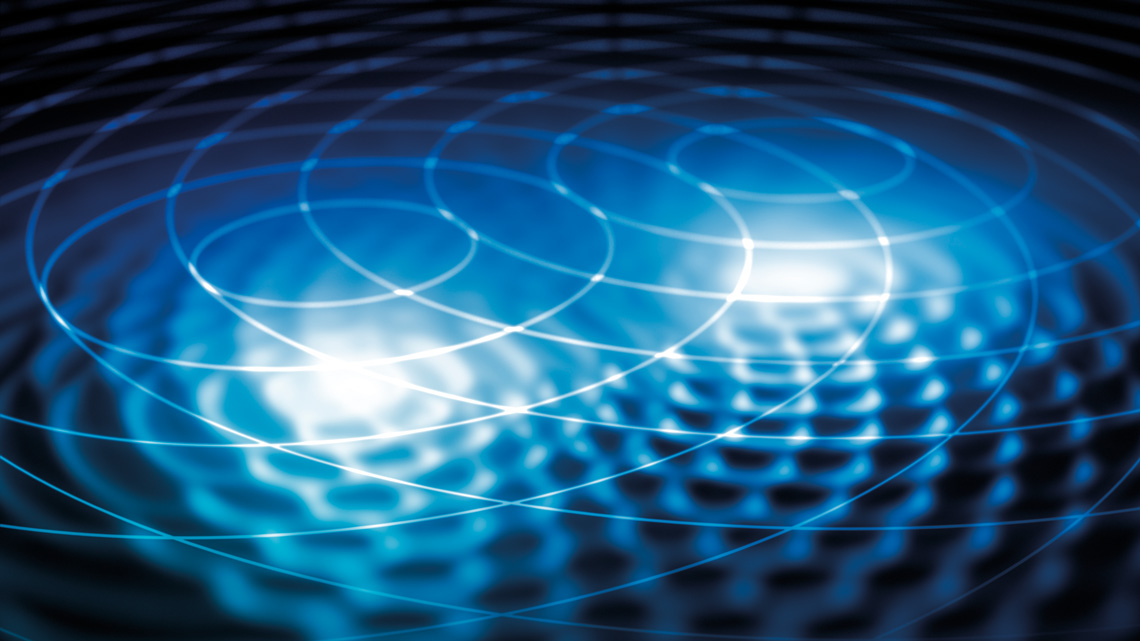Although the field is counterintuitive and defies the logic that governs the interactions in the macroscopic world of classical physics, quantum mechanics aptly describes the behavior of matter and light on the scale of the atom and subatomic particles. One of its strangest, and at the same time, most defining properties, is quantum entanglement. In this state, two (or more) particles behave as if they were a single, intertwined entity, no matter how great the distance separating them. The result of measurements made on one particle is correlated with the value obtained for the other.
An article published in early March in the science journal Physical Review Letters shows that it is possible to determine whether a system composed of two particles of light (photons) is entangled, even when measurements are taken on just one of these particles. The work presents an experimental method and the theoretical concepts that allow this type of measurement to be conducted.
The study was coordinated by Austrian physicist Anton Zeilinger, from the University of Vienna, one of the three winners of the 2002 Nobel Prize in Physics for his research in the field of quantum entanglement. Physicist Gabriela Barreto Lemos, from the Federal University of Rio de Janeiro (UFRJ), who completed a postdoctoral internship in Zeilinger’s group in 2016, is the study’s lead author. “Our method is useful in situations where, for whatever reason, there’s no detector available or appropriate for measuring the state of one of the entangled particles,” Lemos says.
Entanglement is a phenomenon that is as spectacular as it is fragile. The mysterious connection that keeps two particles correlated—such as photons or electrons—can break down due to interactions with a wide variety of environmental variables, such as temperature fluctuations, the actions of other particles, or mechanical disturbances. Therefore, it is important to be sure if there really is entanglement in man-made systems in the real world, beyond the ideal conditions of theory. “The results of this new study may be useful, for example, for developing certification protocols for quantum cryptography systems,” says physicist Roberto Serra, from the Federal University of ABC (UFABC), who was not involved in the study.
The first step in the experimental study conducted by the Austrian and Brazilian physicists consists of using two identical sources, composed of one laser and one crystal, to produce photons. Each source generates, at different moments, a pair of photons—alpha and beta—which exhibit a fundamental property of quantum mechanics known as the superposition of states. That is, each particle is in two different states at the same time, until a measurement is performed on it. Once this is done, the particle assumes one of the possible states.
In the experiment, this superposition means that each photon pair, regardless of whether it was produced by source one or source two, behaves as if it were created from both crystals. The alpha photon from the second source has identical quantum properties and propagates along the same path taken by the alpha emitted by the first crystal. The beta photon’s situation is slightly different. Depending on where it was generated, whether in the first or second source, each beta particle, despite their enormous similarities, follows a different propagation path. These two disparate paths can be combined with an optical apparatus and thus generate a characteristic wave pattern that can be observed in a detector.
This pattern is a record of what’s called quantum interference and, in the experiment, derives from the combination of the possible paths that can be followed by beta photons if generated in the first or second source. It serves to confirm whether there is entanglement in the system and whether the degree of this correlation is strong, medium, or weak. The answer is obtained without any alpha photons being detected. “Using the quantum interference pattern to check whether there is entanglement in the system is a genius move,” says physicist Marcelo Martinelli, from the University of São Paulo (USP), who was not involved in the study.
The approach is only possible due to the dual nature of light, which is simultaneously both a particle and a wave. In Lemos and Zeilinger’s experiment, the combination of two possible paths for the beta photon results in a new wave pattern. According to the properties of the original beta photon wave, this interaction—or interference, to use physicists’ vernacular—can produce a final wave that is larger, i.e., amplified, or smaller, i.e., reduced, or even nonexistent. This quantum phenomenon is similar to the oscillations created by stones breaking the surface of a lake, which, when interacting, can amplify or cancel the initial waves.
“In this new study, we used an approach similar to the one we used in a 2014 study, which generated an image of an object without using the light particles that came into contact with it,” says Lemos. In the study carried out nine years ago, also conducted by Zeilinger’s team and published in the journal Nature, the physicists created a pair of entangled photons, one with an infrared wavelength and the other corresponding to the color red (see Pesquisa FAPESP issue nº 224). Only the infrared photons interacted with an image cut out of a piece of cardboard, however, it was the red-colored photons that were detected and produced the image, the silhouette of a cat. Because they were entangled, the infrared photons, which were never detected, “transmitted” the information about the image to their red twins.
Scientific articles
LEMOS, G. B. et al. One-photon measurement of two-photon entanglement. Physical Review Letters. Vol. 130, no. 9. Mar. 3, 2023.
LEMOS, G. B. et al. Quantum imaging with undetected photons. Nature. Vol. 512, no. 7515. Aug. 28, 2014.


